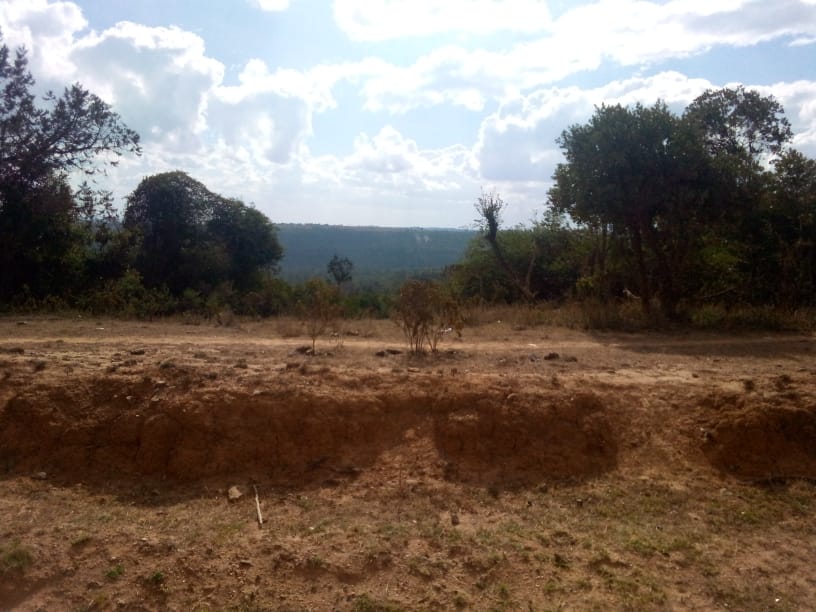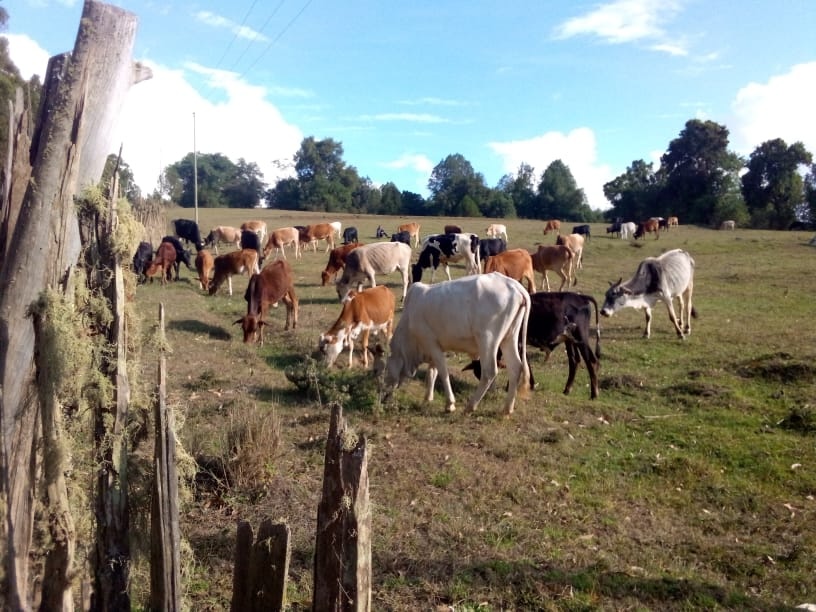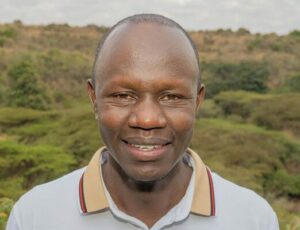FOR IMMEDIATE RELEASE: June 6, 2025
Contact: Tom Kibet | info@iamnuru.org
Nuru Kenya Partners with World Wildlife Fund’s Climate Crowd Project in Samburu County, Kenya
MARALAL – Nuru Kenya, in partnership with World Wildlife Fund (WWF) Climate Crowd initiative, has released a new summary report detailing the widespread effects of climate change on communities and wildlife in Samburu County, located in northwestern Kenya. The report draws from 32 interviews conducted by Nuru Kenya in November 2023 with a diverse group of local stakeholders, including agribusiness cooperative members, community leaders, health workers, government officials, and conservation representatives.
What is Climate Crowd?
Climate Crowd is a global, community-driven initiative led by WWF that collects and analyzes primary data on how climate change impacts rural communities through key informant interviews. The Climate Crowd survey focuses on three key areas: observed changes in weather patterns, the resulting impacts on livelihoods, and the ways in which communities are responding to these changes. Local organizations conduct interviews with diverse community groups to gather responses on these key areas and input the surveys into the WWF Climate Crowd portal. The data is then cleaned and made publicly available, providing localized data insights into climate change and community responses. By working directly with local people and organizations, like Nuru Kenya, Climate Crowd identifies climate-related challenges and can support the design and implementation of selected on-the-ground adaptation projects. The approach emphasizes local knowledge, rapid data collection, and collaborative problem-solving to adapt to changing environmental conditions.

Camels crossing a roadway, Samburu County
Report Findings: Weather Patterns and Agriculture
The findings reveal that community members of Samburu County are experiencing increasing environmental stress due to changing weather patterns. All members reported decreased rainfall, more frequent droughts, and the loss of water sources. A majority (69%) of community members interviewed highlighted the scarcity of pasture as a key challenge for grazing their livestock. These conditions have significantly affected agro-pastoral livelihoods that rely on rain-fed farming and livestock grazing.

Depleted land, Samburu County
The report also notes a rise in food insecurity and poverty. Reduced crop yields and livestock productivity have led to increased hunger (53%) and illnesses linked to poor nutrition (56%). To cope, households are turning to food assistance, school feeding programs, and alternative livelihoods such as casual labor, beekeeping, and dairy production.
Report Findings: Biodiversity and Wildlife
Human-wildlife conflict has intensified as water and food sources diminish. Nearly half of the community members observed increased wildlife encroachment, with animals like elephants and zebras moving into residential areas. These encounters have led to crop damage and injuries, prompting interventions from agencies like Kenya Wildlife Services.
Biodiversity is also facing increasing pressure due to changing weather and community responses. Communities reported forest loss (28%) and a decline in red cedar trees (25%), linked to drought, locust infestations, and logging. The spread of invasive plant species was also noted, which disrupts local ecosystems and reduces forage for livestock.

Cattle grazing in Samburu County
Farmers noted a variety of challenges that make their livelihoods especially difficult. Vegetation is drying up, leaving livestock without enough food or water, which has led to widespread losses. As water becomes scarcer, both people and wildlife are competing for limited resources, increasing human-wildlife conflict. Women are forced to walk longer distances to collect water, and the lack of vegetables has contributed to rising malnutrition. These hardships are also driving more students to drop out of school and leading to a rise in early marriages.
In response to these livelihood impacts, community members and stakeholders have taken various actions. These include diversifying income sources through dairy farming, women engaging in charcoal production, NGOs supporting women’s empowerment and resilience, the provision of business training, and government efforts to manage human-wildlife conflict.
Positive Adaptations
Despite these challenges, positive community-led responses are emerging. Some residents are establishing tree nurseries, planting fodder crops, and implementing water harvesting systems. These grassroots efforts reflect a strong desire to build resilience and adapt to a changing climate.
“The data from our survey clearly highlights the urgent need for an inclusive and resilient agroecological approach to effectively address the impacts of climate change. I firmly believe that Nuru Keny’s model is not only timely but also instrumental in driving this noble cause forward.” – Tom Kosgei, Nuru Kenya COO
How will this be used by Nuru Kenya?
The Climate Crowd model’s participatory approach is helping amplify these local voices, ensuring that solutions are rooted in community knowledge and priorities. Community members’ responses provide valuable context on livelihood strategies, contributing to localized data that Nuru Kenya can use to inform impact-driven activities as they continue to scale up in western Kenya. Nuru Kenya remains committed to supporting sustainable, locally driven adaptation strategies that protect both people and ecosystems in Samburu County.
###
About Nuru Kenya:
Established in 2008, Nuru Kenya is a locally-led organization in Kenya and a member of the Nuru Collective, a network of organizations united by the vision of a world without cycles of unjust poverty, where resilience and hope are cultivated in the most marginalized communities. Nuru Kenya’s mission is to build the resilience of smallholder agricultural communities in six counties of remote rural Kenya by eradicating extreme poverty and establishing sustainable locally-owned agribusinesses by 2030.
About WWF:
WWF is one of the world’s leading conservation organizations, working in nearly 100 countries for over half a century to help people and nature thrive. With the support of more than 5 million members worldwide, WWF is dedicated to delivering science-based solutions to preserve the diversity and abundance of life on Earth, halt the degradation of the environment and combat the climate crisis. Visit http://www.worldwildlife.org to learn more. Keep up with the latest conservation news by following @WWFNews on X and sign up for our press list and news alerts here.



